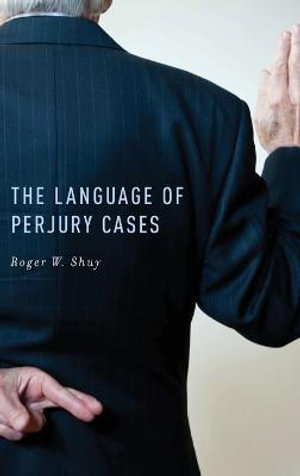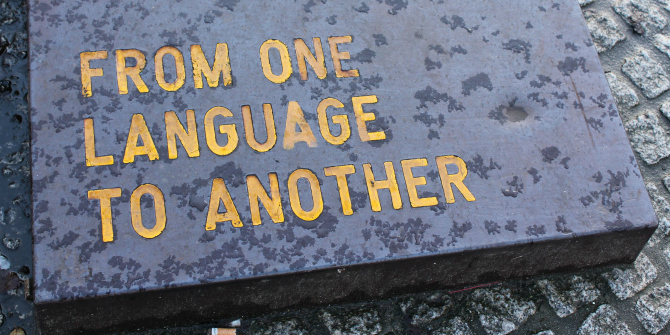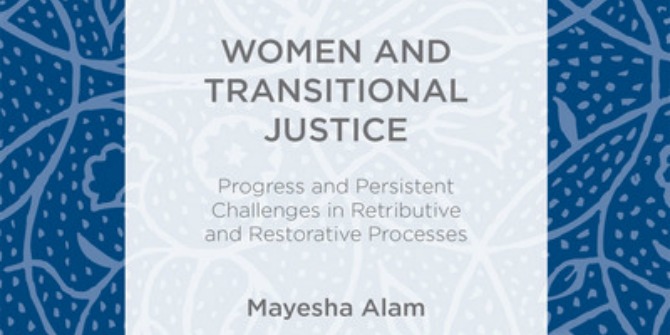The Language of Perjury Cases outlines the contributions that linguistics can make to both the gathering of evidence and the way that evidence is analysed in perjury cases. Roger W. Shuy describes eleven representative lawsuits – involving bankruptcy, unions, hunting licenses, doctors, priests, and Senators – for which he served as a consultant. Kate Haworth is disappointed by the lack of analytical detail, and feels that this book is perhaps best seen as a good starting point for the curious, especially lawyers, to gain insight into the types of case in which linguists can be useful.
 The Language of Perjury Cases. Roger W. Shuy. Oxford University Press. January 2012.
The Language of Perjury Cases. Roger W. Shuy. Oxford University Press. January 2012.
For those already familiar with forensic linguistics, Prof. Roger Shuy needs no introduction. For those for whom this relatively recent field is a new discovery, forensic linguistics involves the interface between language and law, and more specifically the use of linguistic evidence in the legal process. The field essentially came into being when various prominent linguists were approached by enterprising lawyers on an ad hoc basis to assist with legal cases in which language issues had arisen. Thus in England, for example, Prof. Malcolm Coulthard gave linguistic evidence in several high-profile cases such as the successful appeal against the conviction of Derek Bentley, and on the other side of the Atlantic, Shuy was similarly consulted for his linguistic expertise. Forensic linguistics has gone from strength to strength ever since, with linguists increasingly being consulted in legal cases, and on the wider front important research continues to be conducted on many aspects of language in legal contexts.
Shuy has continued to be consulted on hundreds of cases in the U.S., building up an impressive portfolio of experience across a wide range of legal areas. He is currently producing a series of books cataloguing this case work, the latest of which is this collection of perjury cases. (Note that the scope of the book is therefore the U.S. jurisdiction only.) Given the extent of his experience and his status as a founding figure in the field, such a collection is potentially of great value, since details of the use of this type of evidence in real cases are otherwise hard to come by. However, this is ultimately something of a missed opportunity.
Linguistic analysis is potentially highly relevant to cases of perjury. As Shuy points out, ‘the determination of perjury rests on the language used by both the questioner and the person who answers, which in turn has to be judged by the jury or, in bench trials, by the judge’ (12). An expert linguist therefore has much to offer the court in assisting them to interpret the language evidence. Shuy presents ten perjury cases in which he was consulted as an expert linguist (and one based on the work of another linguist), each in its own discrete chapter. But unfortunately these case studies don’t quite provide enough detail (or data) to gain a proper understanding of either the legal issues or the linguistic factors involved.
Surprisingly the linguistic analysis seems to be given relatively short shrift, when you might expect this to be the main focus and strength of this book. Even more disappointing is that the linguistic analysis as presented here is actually rather unconvincing on the whole. Although the intention appears to be to make the work accessible to a non-specialist audience, in places the ‘linguistic’ input appears to be reduced to little more than common sense, or the kind of case commentary that any reasonably intelligent observer could have come up with themselves. Of more concern are the occasions where the ‘analysis’ spills over into pure speculation (e.g. as to the thoughts and understanding of a witness in chapter 10), or strays outside the remit of linguistics (e.g by including analysis of ‘the vagaries of recovered memory’, 195) – both cardinal sins for an expert witness.
At one point Shuy highlights a key issue for forensic linguistics at the moment, namely the challenge of getting linguistics accepted as an expert discipline in the legal system (157). Unfortunately, despite an intention – presumably – to increase the status of linguistic evidence in the judicial process, this book potentially strikes a blow in the opposite direction, not only by presenting sometimes rather unconvincing ‘evidence’, but also by suggesting that the linguistic ‘analytical tools’ Shuy utilises here are something that anyone can simply pick up and apply having read this book (32; 203ff.), despite having provided only brief introduction to the underlying linguistic theories and relevant analytic frameworks.
Indeed the final paragraph of the book directly encourages ‘intelligence analysts’ to conduct linguistic analysis themselves, and only ‘if they find this to be an insurmountable task, they can always call a linguist to help them’ (211). It’s difficult to imagine any other expert discipline touting its wares in this fashion (DIY post-mortem, anyone?). A concern with this book, then, is that it may actually undermine the efforts being made by linguists around the world to persuade courts that linguists can provide solid, professional evidence which measures up to the stringent admissibility tests generally set out for expert witnesses.
Overall, this book is perhaps best seen as a good starting point for the curious, especially lawyers, to gain insight into the types of case in which linguists can be useful. It is also an engagingly written, accessible account of a fascinating line of work. But for those who want to learn more about this area I would turn instead to Shuy’s earlier publications, or Coulthard & Johnson’s (2010) Routledge Handbook of Forensic Linguistics. For lawyers with an interest in linguistic issues I’d recommend Solan & Tiersma’s (2005) Speaking of Crime, and for more detailed analyses and case reports there is an entire journal to consult (The International Journal of Speech, Language and the Law). Ultimately, speaking as a card-carrying forensic linguist, I wouldn’t want any reader to take this as representative of the type of expertise we offer, or to try to use this as a guide to how to do it yourself. Expert evidence should never fall into the category of something that anyone can teach themselves by reading examples of someone else doing it.
——————————————————————————————-
Dr Kate Haworth is a lecturer in Applied Linguistics at the Centre for Forensic Linguistics, Aston University. She previously practised as a barrister, both in private practice and in Whitehall, before receiving her PhD on the language of police interviews from Nottingham University in 2009. Her research interests include professional discourse, language and identity, (critical) discourse analysis, and language as evidence. She is currently working with several police forces to develop training in linguistics for police interviewers, in order to enhance the production of high quality evidence through the interview process. Read reviews by Kate.







